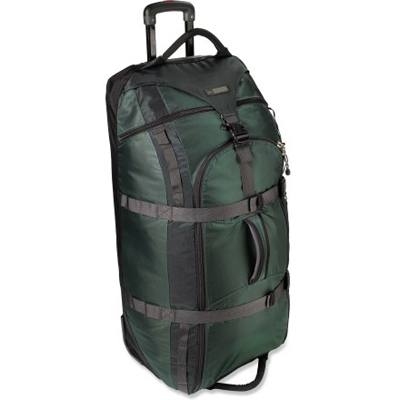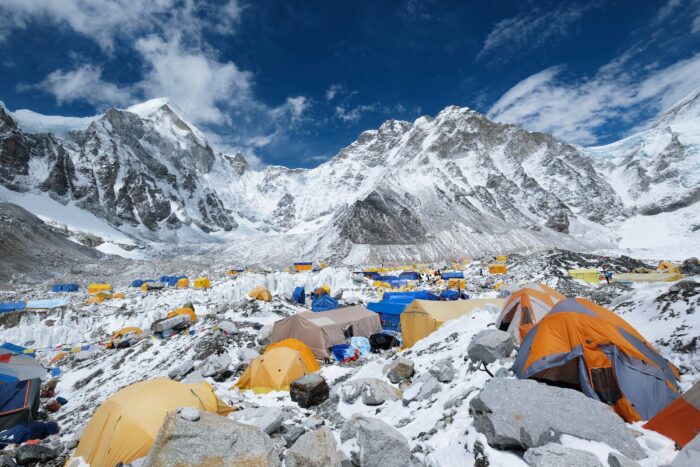Backpack? Check. Trekking poles? Check. Baby wipes? Got those, too. Gearing up for an international expedition is no small feat. There are dozens — even hundreds — of items large and small, common and esoteric, to remember and bring along. But the bulk of the gear, apparel, and accessories for many trips are common outdoors items. For my trek to Mount Everest Base Camp next week with the Expedition Hanesbrands team, the gear checklist is undoubtedly long. Big piles with boots, base layers, packs, waterproof bags, books, and myriad small essentials are already accumulating in my house. I have two big duffel bags and a carry-on pack to cram it all in. To be sure, Thai Airways’ baggage weight limits will be stretched on my flight next week to Kathmandu!
For the trek, Berg Adventures International, the Canmore, Alberta, adventure-travel and mountaineering company our expedition is relying on, provides an extensive list of required and optional gear. Categories include footwear, clothing, medical, camping gear, “head and hand,” and travel items. In total, there are more than 60 listed pieces to the puzzle, from gaiters and hiking boots to a balaclava, sunglasses (two pairs recommended), Ziploc bags, earplugs, water-purification tablets, gloves, base layers, a camera, books, and a journal. Like most large guiding outfits, Berg Adventures’ list, which is accessible at www.bergadventures.com, is culled from years of experience and dozens of expeditions around the globe.

What does the Gear Junkie do to pack for this kind of trip? Beyond following a recommend list of equipment, my unique — and admittedly messy! — method to getting prepared for an expedition begins with the aforementioned piles of gear. At home, I clear out a corner in my office a couple weeks before departure and start throwing things into a pile. This gear — anything I may need — is to be sorted and organized throughout the packing process. I switch out items and put in new things at will, liberally adding anything I may want and then whittling it all down to the essentials as the trip date draws near.
Another step: On my computer, I create a simple text file — this trip’s document is called “Nepal-ToBring” — to serve as an ever-growing list where I add random thoughts when things come to mind and notes on items I need to bring. To start the file, I copy and paste the mandatory gear list from outfitters or event organizers (in this case Berg Adventures’ list). I then add in my must-not-forget essentials right away, even the obvious items like my passport, wallet, glasses, and cell phone. Then it’s on to all my outdoor gear for the trip. I list items generically (tent; sleeping bag; wool hat) and also, when needed, by make, model or brand (Inov-8 Roclite 285 shoes; SteriPen; Buff; Nemo tent; etc.). A day or two before departure, I print the list and begin digging through my pile, sorting gear, and crossing things off as they’re packed in my duffels for the trip.
There are a million and one details that go into packing for an expedition. Everyone has personal preferences and their own way of preparing for adventures and multiple weeks away from home. Here are a few bulleted thoughts on my methods, including random ideas on packing as well as some specific gear I never leave home without.
> Baby wipes. On an international trip, you never know when your next shower may or may not come. I bring baby wipes from home in a pouch or options like Adventure Medical Kits’ trip-specific cleanup product, the Fresh Bath Travel Wipes. They are heavy-duty antibacterial moistened wipes made for travel. The AMK wipes come in small re-sealable pouches and retail for less than $5 at www.adventuremedicalkits.com.











